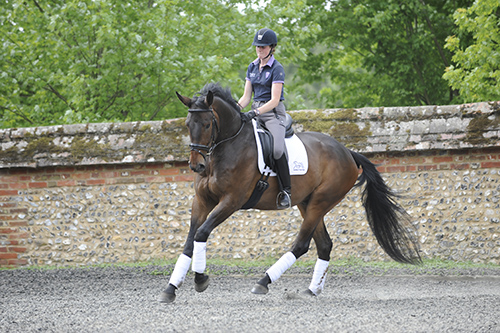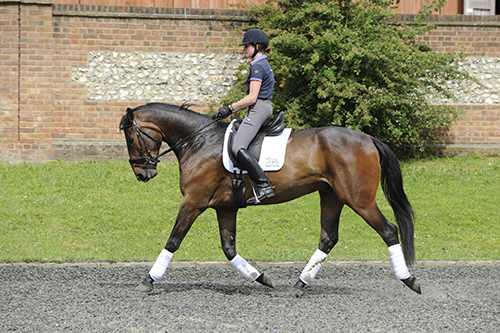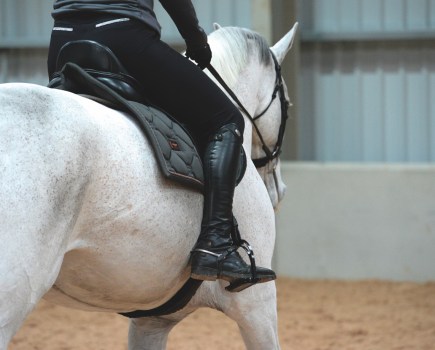Use dressage trainer Vikki Hayton’s advice to combine three easy exercises and make a handy 30-minute lesson. The beauty of this particular lesson is that it will engage your horse and lift his forehand. Here we go…
Your horse naturally carries more weight on his shoulders, but having a rider on his back increases the pressure on his front, causing him to fall onto his forehand.
Lifting from this requires your horse to re-establish the balance and move his weight onto his hindquarters.
While this move would win you extra points in a dressage test, it can also improve your horse’s jump, as he’ll use more power from his rear legs to propel higher in the air.
Combine these three exercises to create a 30-minute workout that balances your horse and lifts his forehand.
Exercise 1: Half-halts
Riding a half-halt engages your horse and rebalances him. This exercise will help you to bring your horse to balance on his hindquarters, rather than his forehand.
How to ride it
Begin with an active walk, maintaining an equal and soft contact down the rein to ensure that your horse is straight and start to transition between walk and trot to get him moving.
Once you feel happy that your transitions are fluid and balanced, you can focus on your half-halt.
Establish a good trot and then transition smoothly down into walk, applying pressure to the reins without pulling.
Walk for four paces before trotting again. Repeat this until you achieve four clear paces of walk and then reduce the number of walking paces to three, two and then one.
The final part of the exercise needs you to imagine that your horse will take only a half step of walk from the trot.
Prepare to transition down into walk, again without pulling on the reins. Maintain a light leg aid and as soon as you feel that your horse is about to walk, ride forward back up into trot.
This is where you achieve your half-halt, with the horse’s hindquarters coming underneath him, lifting him off his forehand.
After perfecting this, you can up the pace and try the same in canter.
 Exercise 2: Transitions
Exercise 2: Transitions
Direct transitions in your schooling will engage your horse and get him moving forward and uphill.
Working on this exercise for 10 minutes is also a great way to begin working towards a flying change.
How to ride it
Start on a circle and ask your horse to halt. Keep your hands light, as too much pressure will make him fall onto the forehand. Halt for four seconds and then ask for an upward transition into trot. Repeat this several times until you feel happy with the response.
Next, try the same with walk to canter transitions. Walk for four paces on a 20m circle and then transition up into canter. Repeat this until you achieve four clear paces of walk and a smooth upward transition to canter. Mistakes can be made when the walk isn’t established, so ensure you keep a good rhythm. Counting is key to this exercise.
As you and your horse progress, try reducing the paces of walk down to three, two and then one. You can also try moving the exercise off the circle and onto a straight line.









